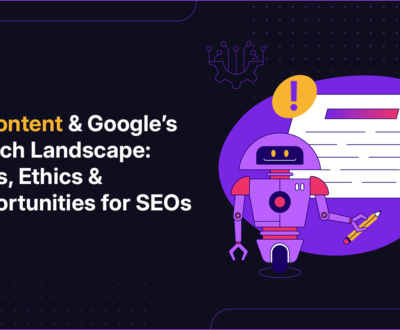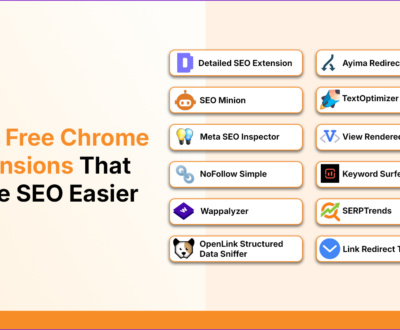GEO vs AEO vs SEO: How to Win Visibility in the Age of Generative AI
Ever feel like you’re going against the current in an ocean of search results? With GEO vs SEO, SEO vs GEO vs AEO, it’s enough to give your head a spin.
But hold on—you’re about to get a map, a compass, and a flashing neon sign pointing you in the direction of digital visibility.
So, get ready, reader! In the rapidly changing world of digital marketing, three acronyms are vying for visibility: GEO, AEO, and SEO.
You’ve likely found yourself thinking, “What’s GEO vs SEO even?” or “How do I deal with these new pretty factors without losing my mind?” We’re here to make sense of it.
Did you know that 63% of users start their online experience on a search engine, app, or website? That means visibility is not only nice to have—it’s survival.
Mix in generative AI engines, and the waters get rough quickly. Consider it like playing darts in a windy storm—anchor your strategy with strong tactics and deep audience understanding.
What Is GEO vs SEO? Breaking It Down

GEO vs SEO—they share letters but mean different things. Let’s unpack:
- SEO (Search Engine Optimization): That’s the OG—Google-first. It involves ranking for keywords, creating high-quality content, and on-page optimization.

- GEO (Generative Engine Optimization): The new kid on the block. GEO is all about writing responses that AI chatbots (such as ChatGPT or Bard) will be drawing from. Imagine it like “how do I get AI to respond with my stuff to the user?” as opposed to “how do I get on Google’s first page?”

And, of course, there’s GEO vs SEO generative engine optimization—the trillion-dollar question: which one makes you visible in AI responses versus web search results?
Crafting GEO-Ready Content + SEO Soul
Here’s the magic sauce for GEO vs SEO bliss and understanding the impact of AI on modern content visibility:
- Master Search Intent: Solution-seekers need answers; AI seekers need chat.
- Write in Bite-Sized Chunks: Short Q&A segments, bullet lists, bold callouts—AI devours these.
- Employ Conversational Hooks: “Have you ever asked yourself?” or “Imagine this…” distracts.
- Maintain Human Tone: Idioms, slang, and humor—just not too much.
- Add SEO Discipline: Keyword in title, meta description, image alt text, internal links.
- Optimize for AEO: Headings with questions, templated lists, and clear answers.
GEO vs. SEO – Generative Engine Optimization Tactics
Let’s zoom in on useful GEO vs SEO generative engine optimization strategies:
- Employ Question-Based H2s: e.g., “How does GEO vary from SEO?”

- Answer Briefly Below: Two to three sentences—binges like it.
- Speak Naturally: Don’t pretend—sound human-like.
- Schema Isn’t Going Out the Window: Retain Breadcrumbs and FAQ Schema—it Sources AEO and GEO.

- Establish Examples: “If you query ‘How do I bake sourdough bread?’…” assists AI in anchoring your content to the query.
For offshore SEO professionals, mastering GEO strategies ensures your clients stay visible in both search engine and AI-generated results.
SEO vs GEO: Examples in the Wild

Example 1: Recipe blog
- SEO Page: 2,000 words, images, keyword “sourdough recipe.”
- GEO Tweak: Add Q&A, such as “Why didn’t my sourdough rise?” with punchy answers.
Example 2: Legal service site
- SEO Page: ‘Best divorce lawyer in [city]’ with service details.
- GEO Twist: Add, “What should I ask a divorce lawyer?” for AI to select.
Before making these tweaks, running a detailed SEO website audit report helps identify which pages need GEO optimization and where content gaps exist for AI-friendly enhancements.
The SEO vs GEO vs AEO Showdown

What about AEO? That’s Answer Engine Optimization, which is designed to capture those coveted featured snippets or answer boxes on search engines. Compare:
- SEO vs GEO differences:
- SEO: Ranking conventional search engine results pages (SERPs).
- GEO: Optimizing for AI answers, conversational queries.
- SEO vs AEO vs GEO:
- SEO = target terms, backlinks, and technical cleanliness.
- AEO = answer boxes, rapid responses, structured data.
- GEO = bespoke for generative AI, rich answers, conversational structure.
Why This Matters Now – The AI Boom

Let me share some stats that will leave you saying “Oof!”
- More than 40% of US adult consumers have employed generative AI in search.
- Content sites employing AI-friendly content formats experienced traffic growth of as much as 50% within three months.
- Featured snippets build trust and CTR by 8–12%.
If your content is not GEO vs SEO optimized, you’re playing checkers when the world is playing chess. You’re providing breadcrumbs to your audience while they want the loaf of bread.
SEO vs GEO vs AEO: Strategic Integration

Don’t think you have to decide—I’m up for a three-way blend:
- Begin with SEO Groundwork: proper keyword research, on-page SEO, and quality content.
- Include AEO Strategies: FAQ-style subheads, bullet-pointed responses, schema markup.
- Layer GEO Elements: conversational cues, Q&A portions, condensed answer-driven paragraphs.
Consider it like creating a spaceship: SEO = the engine, AEO = the navigation, GEO = the autopilot.
Implementation Roadmap
- Inspect Your Content: Determine pages that appear on SERPs but lack AEO/GEO structure.
- Edit for Q&A Format: Include conversational headings and brief answers.
- Monitor Performance: Monitor AI-referral traffic and SERP positions through analytics.
- Repeat: Refine every 3–6 months for inquiries and AI development.
Bonus tip: Integrate user comments, like “I’d also ask…”—makes the AI treat the answer more like a real-human thread.
Future Trends in GEO vs SEO vs AEO

Let’s peer into the crystal ball regarding SEO vs GEO distinctions ahead:
- Voice & Multi-Modal AI: Consider video, voice, and image responses—your content must be flexible.
- Micro-Content Gain: Byte-sized responses (such as in chat) will capture notice in generative engine output.
- Personalized AI Experiences: AI will personalize responses to user history, and context is more important than ever.
To win the generative AI era is to fight intelligent wars on all three fronts: SEO for traditional discovery, AEO for obtaining fast answers, and GEO for AI-native placement.
GEO vs SEO vs AEO: Side-by-Side Comparison Table
| Feature / Focus Area | SEO (Search Engine Optimization) | AEO (Answer Engine Optimization) | GEO (Generative Engine Optimization) |
| Primary Goal | Rank high on Google/Bing SERPs | Appear in featured snippets and answer boxes | Be selected by generative AI tools (e.g., ChatGPT, Gemini) for responses |
| Target Platform | Traditional search engines | Search engines’ direct answers | Generative AI chatbots and assistants |
| User Intent | Informational, transactional, navigational | Quick, direct answers | Conversational, exploratory, personalized inquiries |
| Content Style | Long-form, keyword-rich, formatted for web readers | Concise, structured, direct Q&A or lists | Conversational, natural language, prompt-style responses |
| Optimization Focus | Keywords, on-page SEO, backlinks, technical SEO | Structured data (schema), headings, and question formats | Entities, prompts, contextual relevance, human tone |
| Response Format | Search listings with titles, descriptions, and URLs | One-liners, lists, and snippet-style results | Paragraph-style, human-sounding AI-generated responses |
| Best Use Case | Blog posts, landing pages, and eCommerce listings | FAQ pages, how-tos, product comparisons | Brand positioning in AI answers, conversational search readiness |
| Examples | “Best digital marketing agencies in USA” shows the top 10 in SERPs | “What’s the best time to post on Instagram?” shows a quick answer | “Hey ChatGPT, what are some top agencies for outsource SEO?” includes your brand |
| Ranking Factors | Search engine algorithms (crawlability, links, freshness) | Structured data, question-based content, and direct answers | LLM prompt interpretation, content clarity, tone |
| Content Update Frequency | Moderate—based on Google updates and trends | Frequent—align with question trends and search behavior | Highly adaptable to changing AI prompt patterns and LLM behavior |
| Main Challenge | Competition, algorithm updates | Getting picked for a snippet | Understanding and formatting for evolving AI behaviors |
Pro Tip:
You don’t have to choose sides in the SEO vs GEO vs AEO war. Clever brands use them all. Think of them as teammates, not enemies—each one has a superpower.
Conclusion
Okay, friend—let’s summarize:
- GEO vs SEO isn’t a war; it’s a balance.
- SEO vs AEO vs GEO? Master them all, and you’re miles ahead.
- GEO vs SEO generative engine optimization? It’s the future, and optimizing your content now prepares you for tomorrow’s battle for visibility.
So next time you wonder “What is GEO vs AEO vs SEO?”—keep in mind:
- SEO makes you visible.
- AEO makes you clickable.
- GEO makes you the topic of an AI chatbot conversation…and that’s pure gold.
Questions swirling around? Go ahead, question what you know. Is your site prepared to wow humans, outmaneuver AI, and scoop up those speedy answers?
Ready to Boost Your Visibility with Uvisible?
If you’re ready to level up your SEO, AEO, and GEO plans, Uvisible is your co‑pilot. From AI‑tuned copy to structured data magic, we have the solutions to supercharge your brand visibility on every platform.
Get discovered and spotlighted—contact us to schedule a free consultation today!
FAQs
- How is SEO different from GEO?
SEO (Search Engine Optimization) is optimizing content to be visible on conventional search engines such as Google and Bing.
GEO (Generative Engine Optimization) is all about getting your content quoted, referenced, or summarized by AI platforms such as ChatGPT, Google SGE, Bing Copilot, and more.
In brief, SEO makes you visible, and GEO gets you quoted.
- What is GEO in online marketing?
GEO is an abbreviation for Generative Engine Optimization—a fresh content approach for visibility in generative AI engines. GEO consists of organizing your content with abstracts, question-based structures, sources, and facts such that AI tools comprehend and cite it in replies.
- Is GEO displacing SEO?
No. GEO isn’t supplanting SEO, but enhancing it. While SEO continues to remain important for classic rankings, GEO makes your brand appear in AI-driven answers. With AI being at the center, doing both is critical to control all the discovery channels.
- What is AEO in SEO?
AEO means Answer Engine Optimization, which is a sub-tactic of SEO aimed at optimizing content for voice search, featured snippets, and AI assistants. The aim is to organize your content in a manner that answers users’ questions directly in a brief, trustworthy, and verifiable way.
- How do you GEO-opt content?
Here are some tried-and-tested methods:
- Utilize simple question-answer structures.
- Insert structured data such as FAQ and How-To schema.
- Provide facts, statistics, and citations from authoritative sources.
- Comprise summaries in a few words and key takeaways.
- Structure content with clean headings and logical organization.
- What’s the schema markup role in GEO and AEO?
Schema markup has an important role to play in both:
- For GEO, it assists the AI tools in recognizing the structure and credibility of content.
- For AEO, it helps your content rank for Google’s featured snippets, FAQs, and voice assistant output.
- Is SEO better than GEO?
It’s not a question of one being superior. SEO is required for Google positioning, while GEO is essential for visibility in generative AI. The highest-performing brands leverage both together—this hybrid approach prevents missing clicks or mentions.
- How is GEO different from AEO?
Excellent question!
- GEO is all about making AI bots, such as ChatGPT, reference your content.
- AEO is all about being included in direct-answer styles such as snippets and voice search.
Both are intent-led, structured content, but GEO is more in line with AI models, whereas AEO goes all in on SERP answer boxes and assistants.
- Can I reuse the same content for SEO, GEO, and AEO?
Yes—altered. One piece of content can be reused to fulfill all three by:
- Including short, AI-friendly summaries (for GEO)
- Applying question-and-answer format (for AEO)
- Maintaining conventional SEO components such as keywords, meta tags, and internal links
- Are there tools for measuring GEO performance?
Currently, no widely used tool completely monitors GEO performance in the same way we monitor SEO through Google Search Console or Ahrefs. But brands are leveraging:
- ChatGPT and Gemini to check whether their content is being quoted
- Perplexity AI to discover attribution mentions
- Manual SGE monitoring through Google’s beta tools
Wait and watch—GEO analytics tools are gaining prominence.
About us and this blog
We are a digital marketing company with a focus on helping our customers achieve great results across several key areas.
Request a free quote
We offer professional SEO services that help websites increase their organic search score drastically in order to compete for the highest rankings even when it comes to highly competitive keywords.
Subscribe to our newsletter!
More from our blog
See all postsRecent Posts
- AI-Written Content vs Google’s Search Standards: What SEOs Must Know November 29, 2025
- How to Market Your Reiki Business Online November 25, 2025
- Manipulating AI For Your Brand Benefit: Proven Techniques To Win November 22, 2025









Pingback: AI Content & Google’s Search Landscape: Risks, Ethics & Opportunities for SEOs
Pingback: Long-Form Content Isn’t Dead: Is Blogging Still Relevant?